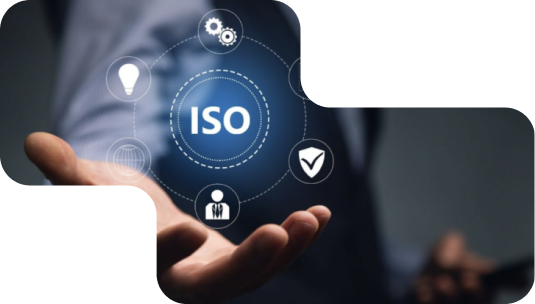ISO 27001: Fortifying Your Information Security in 2023 and Beyond In an age where information is the lifeblood of organizations, safeguarding it against cyber threats and ensuring its integrity and confidentiality is paramount. ISO 27001 is your roadmap to achieving a robust information security management system (ISMS). SecureITLab is here to guide you through the transition to ISO 27001:2022, ensuring that your organization remains secure and resilient.

Demonstrating ISO 27001 compliance can give you a competitive advantage, as clients and partners increasingly value robust information security practices.
In a world where data breaches can have devastating consequences, ISO 27001 is a powerful tool to protect sensitive information and prevent data leaks.
Effective information security management ensures business continuity by minimizing the impact of security incidents and interruptions to your operations.
ISO 27001 assists organizations in establishing and maintaining an effective ISMS. It addresses risks and vulnerabilities, safeguards against security breaches, and helps organizations meet legal and regulatory requirements.
The transition from ISO 27001:2013 to ISO 27001:2022 is a critical step to ensure your information security practices remain up to date. ISO standards evolve to address emerging threats and best practices in the industry. Here’s an overview of the transition:

ISO 27001:2022 introduces new security controls and updates existing ones to reflect modern information security challenges. It's essential to understand these changes to update your ISMS effectively

The 2022 version emphasizes risk assessment and management. Organizations must align their ISMS with the latest requirements to ensure their risk management practices are effective and efficient.

ISO 27001:2022 is designed for easier integration with other ISO management system standards, such as ISO 9001 and ISO 14001. This streamlines the management of multiple standards within an organization.

We provide in-depth guidance on the changes between ISO 27001:2013 and ISO 27001:2022, helping your grasp the new requirements and controls.

Cybersecurity Maturity Assessment

Assess the cyber security posture

Assess the cyber security posture

Assess the cyber security posture

Assess the cyber security posture

Assess the cyber security posture

Assess the cyber security posture

Assess the cyber security posture

Assess the cyber security posture

Assess the cyber security posture

Assess the cyber security posture

Assess the cyber security posture

Assess the cyber security posture of your organization

Assess the cyber security posture of your organization

Assess the cyber security posture of your organization

Assess the cyber security posture of your organization

Assess the cyber security posture of your organization

Assess the cyber security posture of your organization

Assess the cyber security posture of your organization

Assess the cyber security posture of your organization

Assess the cyber security posture of your organization

Assess the cyber security posture of your organization

Assess the cyber security posture of your organization

Assess the cyber security posture of your organization

Assess the cyber security posture of your organization

Information security, cybersecurity and privacy protection — Information security management systems

Security techniques — Extension to ISO/IEC 27001 and ISO/IEC 27002 for privacy information management

Security and resilience — Business continuity management systems

Information technology — Security techniques — Code of practice for information security controls based on ISO/IEC 27002 for cloud services

Information technology — Security techniques — Code of practice for protection of personally identifiable information (PII) in public clouds acting as PII processors

Information technology — Service management Part 1: Service management system requirements

Information technology — Artificial intelligence — Management system

Assess the cyber security posture of your organization

Assess the cyber security posture of your organization

Assess the cyber security posture of your organization

Assess the cyber security posture of your organization

Design and implement a data governance framework aligned with business goals and regulatory requirements

Define and assign data stewardship roles for your organization.

Ensure the accuracy, consistency, and completeness of data

Establish consistent, accurate, and controlled master data

Organize data for easy access and use

Ensure compliance with governance policies and regulations

Manage data from creation to disposal

Ensuring organizational alignment and readiness for governance practices

Evaluate data privacy practices against legal and regulatory frameworks

Draft and implement privacy policies that comply with regulations

Map out and document data flows across the organization

Manage requests related to data subject rights

Embed privacy considerations into data management processes

Ensure that thirdparty vendors adhere to data privacy standards

Manage data breaches and minimize the risk of future incidents

Ensure continuous compliance with privacy regulations

Raise awareness and ensure employees understand data privacy responsibilities

Assess the cyber security posture

Assess the cyber security posture

Assess the cyber security posture

Assess the cyber security posture of your organization
